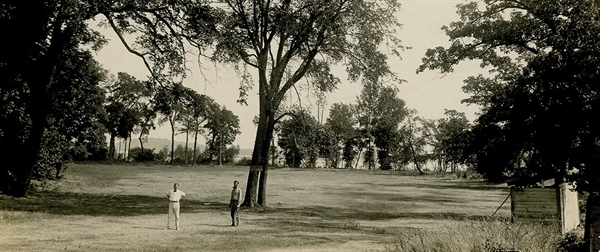Capan Misses Cut in Final Tour Event to Finish Rookie Season 127th in FedEx Cup Standings
SEA ISLAND, Ga. – Following the best individual performance during his rookie season on the PGA Tour last week, Minnesotan Frankie Capan missed the...

Minnesota's 600-plus golf courses, past and present, have taken up residence just about everywhere: mounted on hilltops, perched alongside lakes, rooted next to rivers, cozied up to cul-de-sacs, flanked by forests, put out to pastures and deserted on islands.
Wait, what? Say that last part again. A Minnesota golf course on an island? It's unheard of.
Yep, pretty much.
In 130 years of organized Minnesota golf, in a state that accommodates more than 10,000 lakes, the all-time count of island courses appears to be a mere two—both born exactly a century ago and both long gone.
Coney Isle Golf Course
On a September morning in 2023, a dozen curiosity-seekers set off by boat at Lake Waconia Regional Park, their destination a mile away: a landing on the southwestern tip of Coney Island of the West. (Theories vary as to the origin of the name; it also was known as Paradise Island in the early 1900s.) The 31-acre island as a whole was the excursion's main attraction, and only one visitor had a particular interest in what once lay near its eastern shore. (This is called fore-shadowing; please excuse the pun.)
It's a fascinating place, beyond its thick woods, winding trails and the bucolic backdrop of the city of Waconia, prominently in view a half-mile away. Listed on the National Register of Historic Places, Coney Island of the West holds archeological and historical significance.
Indigenous people visited the island for centuries before it was settled by those of European descent, and relics are still found there. Lambert Naegele bought the island in 1884, platted it with streets named after German authors such as Goethe and built a large hotel. Plots of land were sold. Private cabins were built.
Reinhold Zeglin and his sons operated the island resort before the turn of the 20th century. The Zeglins' interests focused on sports; they built a bowling alley, added croquet grounds and hosted the University of Minnesota football team for preseason training from 1903 to 1905. Workouts were held on a small, flat, open patch on the eastern end of the island.
“[A] better spot could not be found if the world was raked with a fine-toothed comb,” the Minneapolis Journal declared of Coney Island in August 1904.
Two decades later, J.W. Zeglin invited sportsmen of a different bent to play a burgeoning game on the grounds. “Coney Isle Hotel / Open season May 1924 on May 29th,” began an ad in the Minneapolis Tribune. “Under same management for
36 years.”

SEA ISLAND, Ga. – Following the best individual performance during his rookie season on the PGA Tour last week, Minnesotan Frankie Capan missed the...

Players from Minnesota or with Minnesota connections:2025 PGA TOUR Pos. Name (Prev.) From Events Money won 48. Tom Hoge (48), Fargo, N.D., 29...

John Harrigan, 93, passed away at his home in Boynton Beach, Fla., November 15. Originally from Waterloo, Iowa, Harrigan graduated from Stillwater...